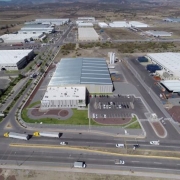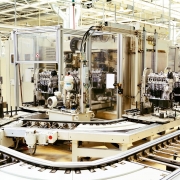El Bajío cuenta con 157 parques industriales y busca convertirse en un referente para América Latina impulsando el pensamiento creativo en todas las industrias.
En los últimos 20 años, el Bajío mexicano ha mostrado su competitividad en diversas industrias como la aeroespacial, automotriz, biotecnología, investigación y educación, ante esto el proyecto El Gran Bajío, conformado por empresarios e innovadores de Querétaro, Guanajuato, San Luis Potosí, Aguascalientes, Zacatecas y Michoacán buscan posicionar a la región como una de las más importantes en América Latina.
“Y es que así como Silicon Valley impulsó el pensamiento exponencial, los nórdicos un pensamiento colaborativo y los japoneses un método de 5S, el Bajío se está convirtiendo en un referente del pensamiento creativo en Latinoamérica“, declaró Federico Quinzaños, Presidente y Fundador de El Gran Bajío en entrevista para Forbes México.
El proyecto El Gran Bajío busca impulsar un ecosistema de pensamiento e innovación para fortalecer el desarrollo de la región mexicana evolucionando a industrias como: la aeroespacial, farmacéutica, movilidad, energías limpias, tecnología y otras más, de la mano de empresarios, innovadores, ejecutivos de negocios y emprendedores.
“El tema de El Gran Bajío es cómo evolucionar a una nueva era; cómo evolucionar hacia un nuevo panorama de nuevas industrias porque estamos en una nueva era y tenemos que entender cómo hacer una transición de la industria automotriz a la industria de la movilidad; cómo sacar de las tecnologías de las tradicionales a la 2.4; de la aeronáutica a la aeroespacial, así como impulsar las industrias creativas y energías limpias”, añadió Quinzaños.
No te pierdas: Inversión de empresarios en sector turístico es clave para su recuperación
Así mismo el directivo aseguró que si bien El Gran Bajío inició con el apoyo de empresarios ya se le han sumado innovadores, empresas globales, ejecutivos de negocios y startups formando un ecosistema con ejecutivos de todos los niveles e industrias que generen una nueva era para la región.
“Iniciamos con los grandes empresarios de la región pero se nos fueron sumando los innovadores que están facturando arriba de los 15 millones de dólares al año; son sólidos, están exportando y tienen alianzas en el extranjero y patentes. En un tercer nivel están las empresas globales y tenemos más de 4,400 en la región de 80 países que han decidido depositar su inversión aquí en El Bajío: es evidentemente que están viendo algo y la cuarta son los ejecutivos de negocios”.

Actualmente el Bajío cuenta con 157 parques industriales, 100 centros de investigación, más de 250 universidades, 76 viñedos, industrias consolidadas como la aeronáutica con 90 empresas, 800 firmas relacionadas con la industria automotriz y 12 armadoras de autos.
“El Bajío durante 20 años ha tenido una estrategia muy interesante de posicionamiento enfocada en crear y desarrollar. Se ha destacado contra otras regiones en México porque tiene un pensamiento creativo porque ha pasado de tener una producción y servicios muy básicos a generar industrias como la aeronáutica, automotriz y tecnología. Hoy tenemos 157 parques industriales, 100 centros de investigación, más de 250 universidades y 100 centros de alta especialización”.
Lee: Sectur digitalizará los 132 pueblos mágicos de la mano de Google
El Gran Bajío cuenta con cinco agencias internacionales para conectar proyectos y negocios nacionales con agencias globales, además de tener capacitación y guía por parte de Singularity University
Quinzaños agregó que actualmente Querétaro se ha enfocado en reforzar la industria aeroespacial, mientras que Aguascalientes ha optado por impulsar la industria de movilidad y en tanto, Guanajuato y San Luis Potosí se han centrado en el sector agroindustrial que está transitando hacia la biotecnología.
“Más que el tema de industrias El Gran Bajío tiene que ver con un tema de mentalidad: ¿cuál es la que estamos compartiendo? Hoy estamos impulsando el pensamiento creativo“, destacó Quinzaños.


